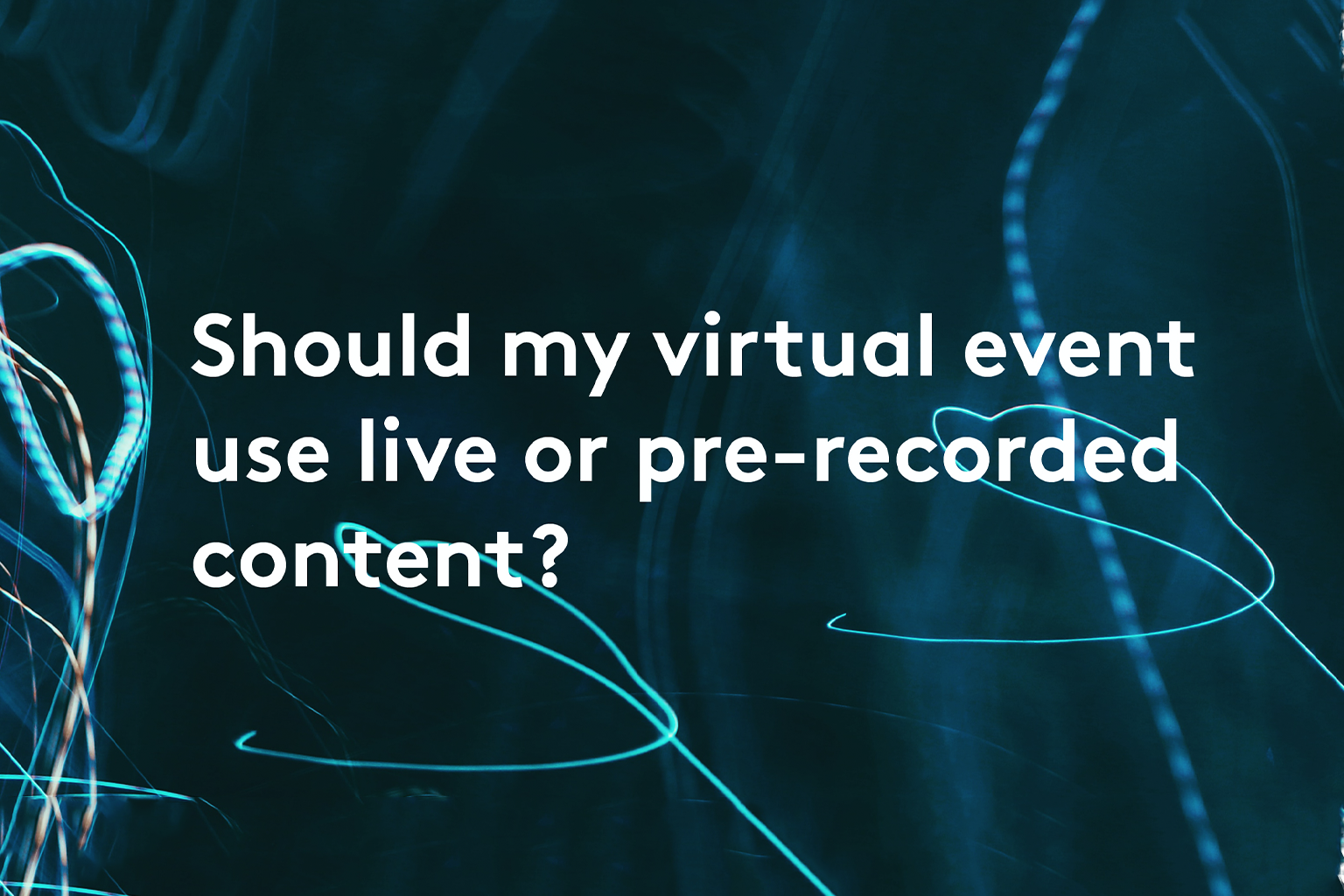Should my virtual event use
live or pre-recorded content?

Mel Underwood from our production team looks at the pros and cons of pre-recording content or going live.
In reimagining events online, "content is king" as the adage goes, and its delivery is just as vital.
Should it always be pre-recorded is a question that we are often asked. Typically pre-recording provides better-quality video while streaming live allows interaction, but at the start of any event planning, live or virtual, consider your audience and what you are presenting
Message-based communications that require little two-way conversation, then pre-recorded is usually the best option. This ensures that you can confidently and professionally convey your message with high-quality video and audio, filmed generally in a small studio set up with a post edit from our production team. This feature is also useful if you plan on having an on-demand service for people who missed the live broadcast. You may also want to use this content later on your own social media channels or website so that quality will be essential here.
AGMs or Keynote speaker presentations: When it comes to AGMs or main plenary speaker presentations with Q&A and/or polling, a few approaches can work. We can use a pre-recorded method as above and then switch to a live Q&A session afterward to give the session the live feel. We can accommodate presenters speaking live from their home environment, although it is worth considering we would be relying on their internet bandwidth. There could also be a hybrid option where we use a studio to stream from with professional filming set up, so the session has the quality and a live feel.
Workshop or breakout environments: In most scenarios, if you are hosting a workshop or breakout session, then this would need to be done in a live setting to capture the interaction. Some virtual platforms can do this within their system, and others that integrate apps such as Zoom to facilitate this. Both these methods have worked well in my experience and offer networking and team-building exercises.
Irrespective of the type of event or how the content is delivered, it is crucial to break content into manageable chunks. This ensures that you don’t lose your audience's attention and allow them to capture and digest what is being shared with them effectively. Using an experienced moderator as a central guiding voice is always a good investment and can link different content and speakers, making the proceedings feel more organic, less scripted, and formulaic.
The main thing to remember when it comes to content is that this virtual event is about you and your business effectively communicating to delegates or team members in the same way you would at any physical event.
If you’d like to know more about how we can help you reimagine your event online and Worldspan’s online platform for virtual & hybrid events – Virt-US Live, drop us a line at hello@worldspan.co.uk